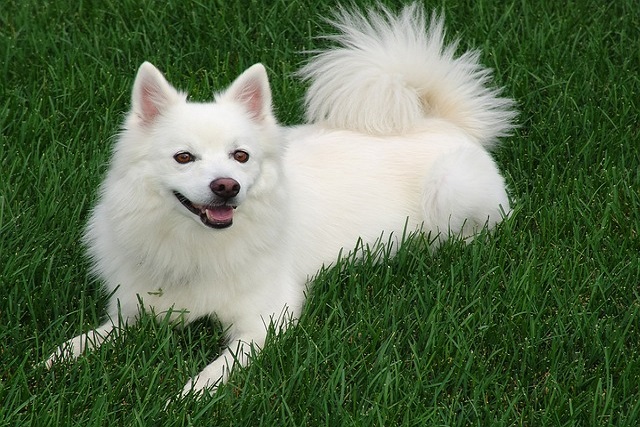
How can I tell if my dog's heatstroke is serious
Let’s be real: It’s a sticky August morning in Los Angeles, and you took your 2-year-old Golden Retriever, Max, for a walk a little later than usual
Imagine you’re in your Chicago apartment, kneeling beside your 1-year-old Goldendoodle, Max, who’s scratching his belly so hard he’s leaving tiny red marks. His fur still smells like the grass from your morning walk, and you’re torn: Should you bathe him to wash off pollen (his main allergy trigger)? But you’re scared—last time you bathed him two weeks ago, his skin got even flakier. If you’re a new US dog owner with an allergy-prone pup, this back-and-forth is totally normal. The truth is, bathing a dog with allergies isn’t about “more is better”—it’s about balancing allergen removal with protecting their sensitive skin, and the right frequency depends on what’s making them itch.
First, let’s break down why timing matters (no fancy jargon, promise). Dogs with allergies have delicate skin—their natural oil layer (which keeps moisture in and irritants out) is thinner than healthy dogs. Bathing too often (like every 3 days) strips this oil, making their skin drier and more itchy. But bathing too rarely (once a month or less) lets allergens—like pollen from your neighborhood park or dust mites from your couch—stick to their fur, worsening their symptoms. My vet in Austin explains it simply: “Think of it like washing your face—you don’t scrub it 5 times a day, but you don’t skip it for weeks either.” A neighbor learned this the hard way: She bathed her Corgi, Bella, every week with regular shampoo to fight grass allergies, and Bella’s skin got so dry she started licking her paws raw. Once she switched to a hypoallergenic shampoo and stretched baths to 10 days apart, Bella’s scratching stopped.

Here’s how to find the right schedule for Max, step by step, in your apartment. First, match the frequency to the allergen: If he’s allergic to outdoor pollen (he scratches more after walks), bathe him every 1–2 weeks—this washes off pollen before he licks it into his skin. If it’s indoor dust mites (he scratches more at night), every 2–3 weeks is enough—over-bathing will dry him out. Second, use the right products: Skip human shampoo (it’s too harsh!)—grab a vet-recommended oatmeal or hypoallergenic dog shampoo (look for “fragrance-free” on the bottle). Wet him with lukewarm water (hot water irritates sensitive skin), lather gently, and rinse thoroughly—leftover shampoo causes itchiness. Third, make bath time stress-free: Put a non-slip mat in your tub (apartment tubs get slippery!) and give him a freeze-dried salmon treat mid-bath—positive reinforcement makes him stop squirming. Afterward, pat him dry with a microfiber towel (rubbing irritates his skin) and let him air-dry near a fan (avoid hair dryers—they’re too hot). My cousin in Seattle did this for her allergy-prone Shih Tzu: Adding a treat and using cool water turned bath time from a fight to a calm routine.
Now, let’s tie in US rules and pet culture you can’t ignore. First, compliance: Even while focusing on baths, never let Max’s rabies vaccine lapse—Illinois requires puppies to get their first dose by 4 months old, and unvaccinated dogs can’t see a vet if their allergies worsen (some cases need prescription shampoos). When you walk him, always bring poop bags—Seattle fines $250 for uncollected waste, and allergy-prone dogs sometimes have looser stools (from itching-related stress), so cleaning up fast keeps sidewalks clean. Second, community and apartment manners: After walks, wipe Max’s paws and belly with a damp cloth before he comes inside—this cuts down on pollen tracked into your apartment, so you don’t have to bathe him as often. If a neighbor asks about his baths, explain you’re balancing allergen removal and skin health—responsible pet owners share tips, not excuses. Third, cultural musts: Never punish Max for squirming during baths or scratching afterward—yelling or tapping his nose won’t fix the issue, and US pet culture rejects fear-based treatment. He’s not “misbehaving”—he’s in pain. Instead, praise him for sitting still, even for 30 seconds.
With the right schedule and products, Max will scratch less and his skin will stay healthy. Remember: There’s no “one-size-fits-all” frequency—watch his behavior (if he’s itchier after 10 days, bathe him sooner; if his skin is dry, wait longer) and adjust. Bath time should be a way to help him, not stress him out.

Let’s be real: It’s a sticky August morning in Los Angeles, and you took your 2-year-old Golden Retriever, Max, for a walk a little later than usual

You're enjoying a summer afternoon at the park when you notice your dog has stopped panting and appears disoriented - their gums are bright red

Let’s paint the picture: You’re in your Denver apartment, watching your 4-year-old Boston Terrier, Ruby, plop down mid-play session with her favorite toy

Many dog owners notice their pets nails seem shorter after regular walks,but how much does this daily activity actually help?The answer depends on where you walk—concrete sidewalks or asphalt streets gently file nails as a dog's paws hit the ground

Most dog owners notice their pup scooting across the carpet at some point, but few connect it to impacted anal glands. These small sacs near a dog’s rectum secrete a scent for marking territory

Most vets agree that regular dog teeth cleaning is key to avoiding painful dental issues later. For healthy adult dogs, a professional cleaning at the vet’s office every 12 to 18 months usually works well.